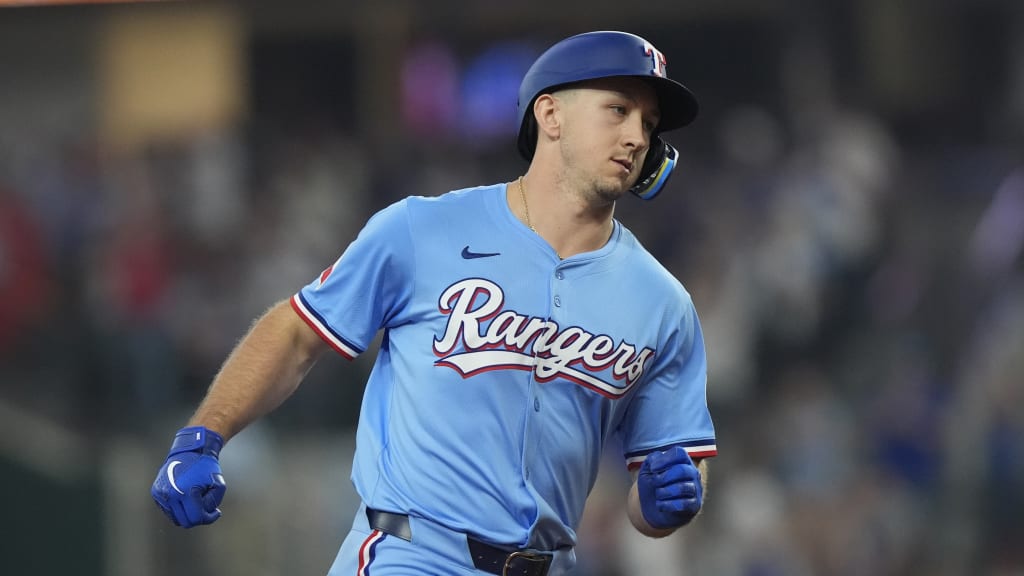
The Arrival of a New Texas Phenomenon
Every baseball franchise reaches a defining moment. Sometimes it arrives with the crack of a bat in October, sometimes with the splash of ink on a record-breaking contract. On rare occasions, though, it sneaks in quietly, almost unnoticed, until suddenly the entire ballpark realizes the future has already walked through the gates.
For the Texas Rangers, that moment is now.
Yes, the championship banners from 2023 still hang proudly, and the echoes of that magical run still stir the Arlington crowd. However, the glow of that triumph has dimmed. Injuries mounted, inconsistency plagued the offense, and back-to-back years without postseason baseball have left the franchise restless. Meanwhile, Marcus Semien and Corey Seager continue to battle, but age and fatigue are beginning to catch up with them.
Amid all that turbulence, something remarkable took root. Instead of fading into the frustration, a new presence began to shine. At first, it was subtle — a home run here, a daring steal there, a clutch hit in a critical inning. Gradually, those flashes grew into patterns, and soon the evidence was undeniable: the Rangers had discovered their next cornerstone.
Why This Feels Different
At just 23 years old, this player didn’t merely hold his own in the big leagues — he thrived. Over 134 games, he hammered 22 home runs, drove in 62 runs, and swiped 22 bases. His .344 on-base percentage hinted at plate discipline beyond his years, while his athleticism injected a much-needed burst of energy into the Rangers’ lineup.
More importantly, he played with a boldness that set him apart. Pitchers couldn’t shake him. Fans couldn’t ignore him. And teammates quickly began to look at him as more than a rookie — they saw him as a catalyst.
Even when an oblique injury cut his season short, the hype did not fade. If anything, it grew stronger, because absence often makes a franchise realize how valuable a young star truly is.

What the Rangers Needed Most
The Rangers’ struggles raised countless questions. Could their veterans continue to carry the load? Was Bruce Bochy still the right man to lead this team forward? How could Texas rebuild an offense that sputtered for two straight years?
While fans speculated about blockbuster trades or high-priced free agents, the real answer was already in house. The solution didn’t have to be bought. It didn’t have to be imported. It had been developing right in front of them all season long.
Pulling Back the Curtain
That answer, of course, is Wyatt Langford.
Langford is not just a promising prospect anymore. He has quickly become the face of the next era in Arlington. ESPN analyst Jesse Rogers described him as “the next Rangers star,” but even that undersells his potential. Langford has the tools to be not only the star of the Rangers but one of the defining players in Major League Baseball.

A Crossroads for Texas
Now, as the Rangers head into the offseason, their future hangs in the balance. President Chris Young must decide how to retool the roster around his rising star. Will the club find protection for him in the batting order? Will Bochy return to guide him, or will a fresh voice be handed the responsibility of shaping the Langford era?
One truth, however, is already clear: Texas doesn’t need to chase a savior. They already have one.
The Dawn of the Langford Era
Wyatt Langford is no longer simply a name on a lineup card. He is the spark of belief in Arlington, the reminder that championship windows can be reopened when the right player arrives at the right time. The Rangers’ 2025 campaign may not have ended in glory, but it ended with something far more valuable — the discovery of a new foundation.
And so, as the Rangers look ahead to 2026, the path is clear. Build around Langford. Protect him. Trust him. Because his era has already begun, and the best chapters are still waiting to be written.




